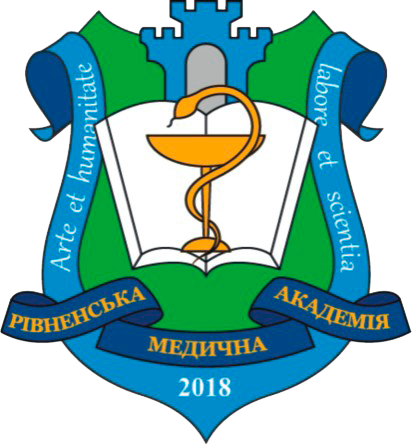DIABETES MELLITUS AND PULMONARY COMPLICATIONS: UNRAVELING THE INFLUENCE ON TYPE II ALVEOLOCYTES
DOI:
https://doi.org/10.32782/health-2023.4.12Keywords:
diabetes mellitus, lungs, experiment, type II alveolocytes, pathophysiologyAbstract
Introduction. Diabetes mellitus (DM), characterized by hyperglycemia, has been extensively studied for its systemic effects. Recent attention has focused on its impact on the respiratory system, specifically on type II alveolocytes (A-II) in the alveoli. Diabetes-induced hyperglycemia has been linked to altered surfactant composition, oxidative stress, inflammation, and impaired tissue repair in A-II, potentially compromising pulmonary homeostasis. Aim. To deepen our understanding of diabetes mellitus effects on the respiratory system by investigating pathological changes in A-II in experimental diabetes mellitus. Methods. We performed an experimental study, involving 88 male Wistar rats distributed across intact (Group 1), control (Group 2), and experimental (Group 3) categories. Experimental diabetes was induced by administering streptozotocin (Sigma, USA) at 60 mg/kg of body weight, diluted in 0.1 M citrate buffer with a pH of 4.5. Tissue samples were gathered at 14, 28, 42, and 70-day intervals. Lung tissue fragments underwent scrutiny through electron microscopy analysis. Results. Initially (14 days), electron microscopy showed baseline features in A-II cores with well-defined mitochondria. By day 28, changes indicated the onset of structural modifications: increased nuclear volume, lightened matrices, and expanded perinuclear spaces. Day 42 revealed pronounced hyperhydration in A-II cores, reflecting responses to prolonged hyperglycemia, including deformed Golgi apparatus and endoplasmic reticulum. The later stage (70 days) showed diverse cellular responses: enlarged nuclei, significant mitochondrial changes, distorted Golgi apparatus, and ongoing cellular stress. Conclusion. Induction of diabetes mellitus with streptozotocin leads to pronounced alterations in A-II ultrastructure, highlighting disruptions in the pulmonary surfactant system and emphasizing the systemic impact of diabetes on lung function. Understanding these changes provides insights into the progression of respiratory complications in diabetes and suggests potential therapeutic targets for mitigating associated pulmonary issues. Further exploration of molecular mechanisms underlying these structural changes is warranted for the development of targeted strategies.
References
Diabetes mellitus and its metabolic complications: the role of adipose tissues / Dilworth, L., Facey, A., Omoruyi, F. International journal of molecular sciences 2021. № 22(14): 7644. http://dx.doi.org/10.3390/ijms22147644
Potential Impact of Diabetes and Obesity on Alveolar Type 2 (AT2)-Lipofibroblast (LIF) Interactions After COVID-19 Infection / Nouri-Keshtkar, M., Taghizadeh, S., Farhadi, A., Ezaddoustdar, A., Vesali, S., Hosseini, R., Tahamtani, Y. Frontiers in Cell and Developmental Biology. 2021. № 9: 676150. http://dx.doi.org/10.3389/fcell.2021.676150
Alveolar tissue fiber and surfactant effects on lung mechanics – model development and validation on ARDS and IPF patients / Yuan, J., Chiofolo, C.M., Czerwin, B.J., Karamolegkos, N., Chbat, N.W. IEEE Open Journal of Engineering in Medicine and Biology. 2021. № 2. Р. 44–54. http://dx.doi.org/10.1109/OJEMB.2021.3053841.
Oxidative stress mechanisms in the pathogenesis of environmental lung diseases / Thimmulappa, R.K., Chattopadhyay, I., Rajasekaran, S. Oxidative Stress in Lung Diseases. 2020. № 2. Р. 103–137. http://dx.doi.org/10.1007/978-981-32-9366-3_5.
The history and mystery of alveolar epithelial type II cells: focus on their physiologic and pathologic role in lung / Ruaro, B., Salton, F., Braga, L., Wade, B., Confalonieri, P., Volpe, M.C., Confalonieri, M. International journal of molecular sciences. 2021. № 22(5): 2566. http://dx.doi.org/10.3390/ijms22052566
The aging lung: Physiology, disease, and immunity / Schneider, J.L., Rowe, J.H., Garcia-de-Alba, C., Kim, C.F., Sharpe, A.H., Haigis, M.C. Cell. 2021. № 184(8). Р. 1990–2019. http://dx.doi.org/10.1016/j.cell.2021.03.005.
Diminished alveolar microvascular reserves in type 2 diabetes reflect systemic microangiopathy / Chance W.W., Rhee C., Yilmaz C., Dane D.M., Pruneda M.L., Raskin P., et al. Diabetes Care. 2008. № 31(8). P. 1596–601. http://dx.doi.org/10.2337/dc07-2323
State of the cellular components of the surfactant system in case of experimental diabetes mellitus / Fedorchenko Yu, Zaiats L. European Respiratory Journal. 2020. № 56:Suppl. 64. Р. 2571. http://dx.doi.org/10.1183/13993003.congress-2020.2571
The Diabetic Lung – A New Target Organ? / Pitocco D., Fuso L., Conte E.G., Zaccardi F., Condoluci C., Scavone G., et al. The Review of Diabetic Studies. 2012. № 9. Р. 23–35. http://dx.doi.org/10.1900/RDS.2012.9.23
Serum surfactant protein A as a surrogate biomarker of a negative heart sign among patients with interstitial lung disease / Sasaki H., Hara Y., Taguri M., Fujikura Y., Murohashi K., Yagyu H., et al. Nagoya Journal of Medical Science. 2020. № 82(3). Р. 499–508. http://dx.doi.org/10.18999/nagjms.82.3.499
Pulmonary surfactant protein SP-B promotes exocytosis of lamellar bodies in alveolar type II cells / Martinez-Calle M., Olmeda B., Dietl P., Frick M., Perez-Gil J. The FASEB Journal. 2018. № 32(8). Р. 4600–4611. http://dx.doi.org/10.1096/fj.201701462RR





